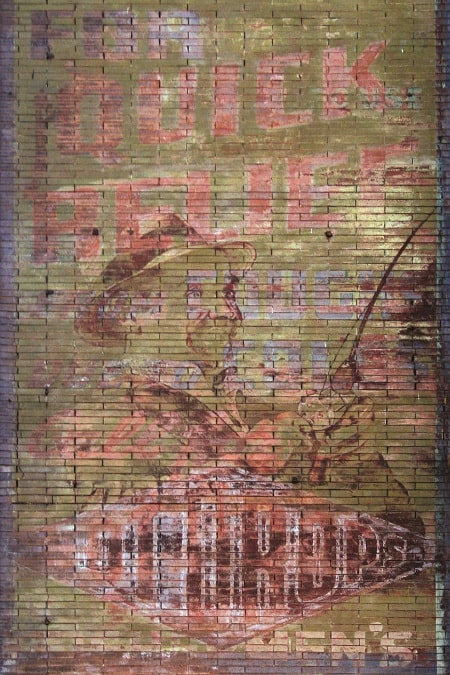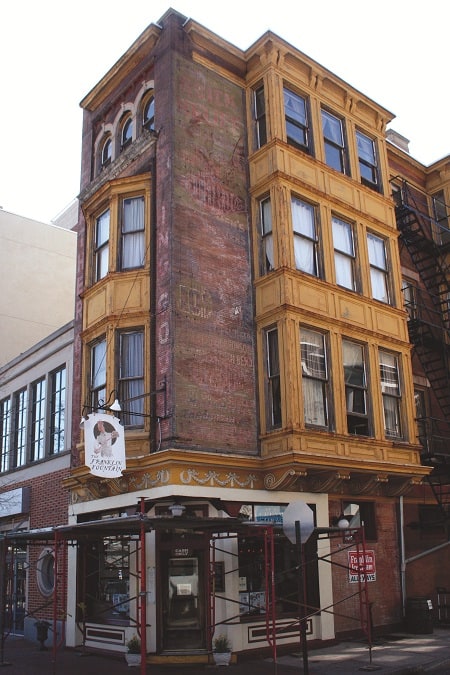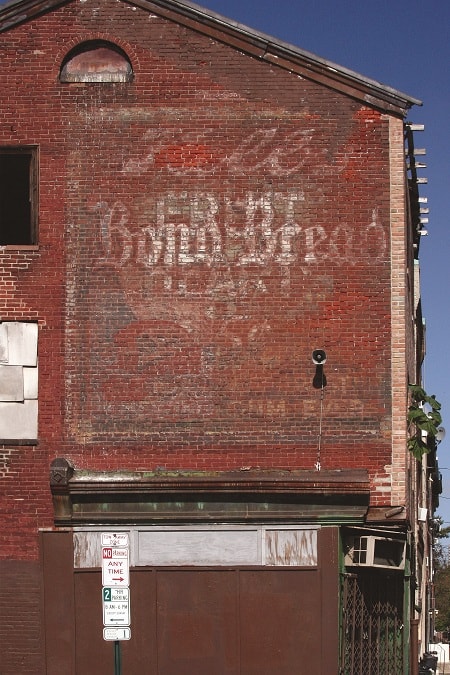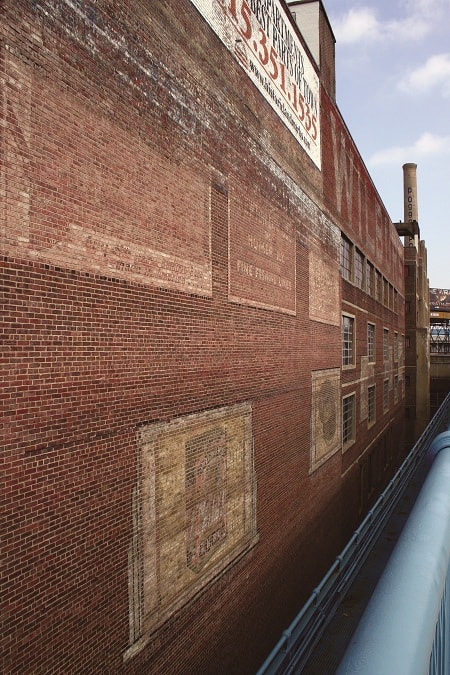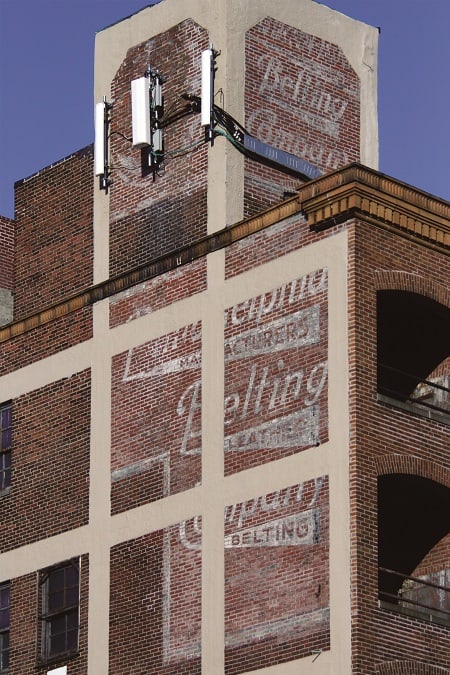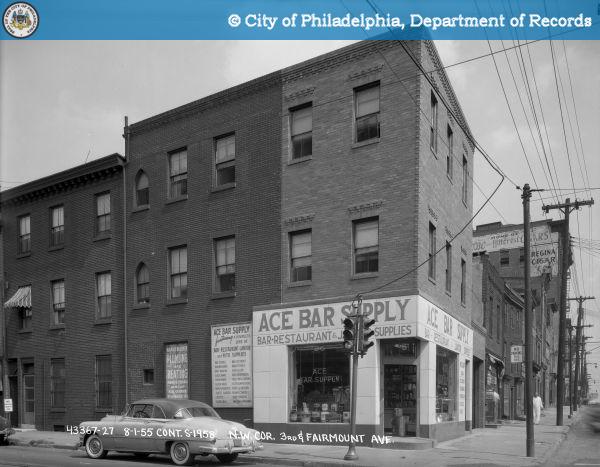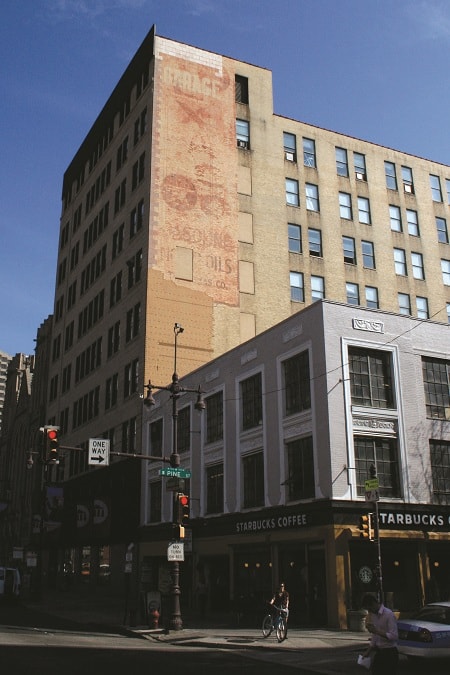15 Oct 2014
Fading Ads of Philadelphia by Lawrence O’Toole
This ghostsign advertising Roxy’s Hunting Goods did for Lawrence O’Toole what the Stoke Newington Fount Pens sign did for me. It sensitised him to the presence of ghostsigns in the urban environment, and started a programme of activity that would lead to the publication of his book, Fading Ads of Philadelphia. He still regards it as one of his ‘favourite signs in all of Philadelphia’ and it really is a beauty, with a combination of colour, illustration, palimpsest and different lettering styles. It has it all, spread across three stories of this corner building.
O’Toole’s first photographs of ghostsigns were taken as a tangent to his university thesis, and his later documentation of buildings destined for destruction brought him back to these archived negatives. He realised the value of what he’d captured and decided to share his images via a blog and google map. Much of this material has gone into the book, boosted by significant local history research to uncover the stories of the companies and buildings behind the signs. As a result of his early photography the book features a high number of signs that are no longer with us. (RIP.)
In contrast to many of the other History Press USA titles in this series (New York; Birmingham; St Louis) O’Toole has adopted a geographical structure to his book which aligns more closely with the titles coming out of the UK (Liverpool; Gloucester; London). This allows him to build wider observations about particular neighbourhoods and business districts into the start of each section, which complements the general industrial history of Philadelphia that is provided.
On the topic of ghostsigns in particular O’Toole has invited contributions from Frank Jump and John Langdon by way of forewords to the book. He also offers up a brief history of the signs in his own introduction. This has an interesting definition for ‘faded advertisement’ as:
‘A weathered painted sign, at least fifty years old, on the exterior wall of a building which heralds an obsolete product, an outdated trademark or a clue as to the history of a building’s occupancy.’
I am grappling with defining the term ‘ghostsign’ at the moment and there is much I can borrow from this, although I believe that ‘fifty years’ is a rather arbitrary measure, much like legal drinking age. However, almost all the material in the book fits within O’Toole’s schema, many with just the white (leaded) paint surviving.
O’Toole also makes judicious use of archival photography, sourced from the fantastic collections at Philly History. This, alongside the extensive local history research, provides a sense of where the city has come from and how things were in Philadelphia when these signs were being painted on every available wall.
As with other titles in this series I wouldn’t recommend buying this book as a general introduction to ghostsigns, rather as a compliment to other more general titles (e.g. Ghost Signs by WM Stage) or for readers with a particular interest in this city and its signs. I would also recommend following O’Toole’s wider work in this area, including the Ghost Sign Project blog, Twitter and Facebook. He is currently working on an app to build even further on his work and no doubt this will continue to grow this beyond the confines of Philadelphia.
You can buy Fading Ads of Philadelphia on Amazon (USA here) or direct from the publisher, the History Press. Find more books about ghostsigns and related topics in the shop and read more book reviews here on the Ghostsigns site.
Thank you to Lawrence O’Toole for allowing me to share these images from the book, and to the History Press for providing the review copy.

